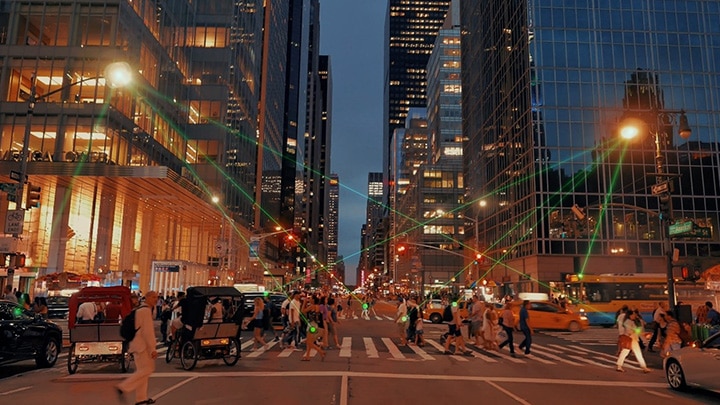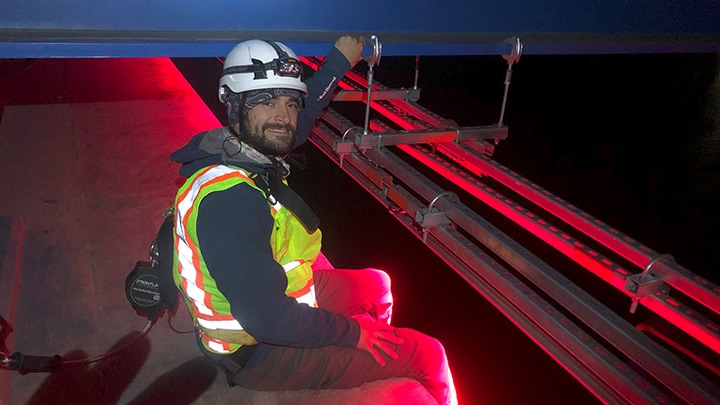To view the complete recording please Login into the learning system using your username and password.
First time users may please Click Here to register.
While you may view the webinar you also will have an opportunity to appear for a short quiz and obtain the certificate if you successfully pass the quiz.
Listen to the experts and learn more about the effects of light pollution on animals and humans.


Kamiel Spoelstra is a behavioural ecologist, and specializes on the impact of anthropogenic activity on species in their natural habitat. He graduated at the University of Groningen (NL), and continued with postdoc positions at Princeton University (US), the Max Planck Institute for Ornithology (DE) and Wageningen University (NL). He currently works as a researcher at the Netherlands Institute of Ecology (NIOO-KNAW, also Wageningen - NL) and is interested in the possibilities for mitigating human impact on ecosystems, in particular of illumination. Recent changes in lighting technology offer promising possibilities for reducing impact, most importantly the ability to produce custom light spectra. Over the last seven years, Kamiel has run a worldwide unique, experimental large-scale and long-term field study along with dedicated field and laboratory experiments.
Kamiel is specifically interested in how light at night affects the spatial and temporal behaviour of nocturnal species, and how different species groups interact. Kamiel enjoys the application of new automated data collection systems and writing software for processing data. Furthermore, he recognizes the power of citizen science based research and has organized courses to train volunteers in field work with mammals. The impact of light on species and ecosystems will remain a key element of his future studies.
Dr. Lockley is a Neuroscientist in the Division of Sleep and Circadian Disorders at Brigham and Women’s Hospital, an Associate Professor of Medicine in the Division of Sleep Medicine, Harvard Medical School and an Adjunct Professor in the School of Psychological Sciences at Monash University. He has been studying sleep and circadian rhythms in humans for 25 years, including the physiological effects of light, and lack of light, in sighted and blind humans, respectively. He has studied the role of light timing, duration, intensity, wavelength and history and most notably to date, the wavelength sensitivity of the circadian photoreception system, helping to confirm the remarkable earlier discovery of a novel non-rod, non-cone short-wavelength sensitive photoreceptor in ganglion cell layer of the human eye.
Dr. Lockley has studied extensively the effects of blindness on sleep, circadian rhythm and alertness in laboratory and real-world settings. Dr. Lockley has also studied the therapeutic benefits of light for seasonal depression and fatigue associated with traumatic brain injury, and as a countermeasure for disrupted circadian rhythms in spaceflight and at mission control. He is currently performing flight tests of new solid-state lighting aboard the International Space Station. He has published more than 150 original reports, reviews, chapters and editorials on sleep and circadian rhythms and his research is funded by the NIH, NASA and others. He co-authored 'Sleep: A Very Short Introduction' from Oxford University Press in 2012.
Effects of light pollution on animals
Kamiel Spoelstra will present the most recent insights on the impact of artificial light on different species groups, and potential ways to avoid and mitigate negative effects.
The impact of light may be particularly severe for insects, rodents, bats and amphibians as these species strongly depend on darkness. Until recently, knowledge on the impact of light on species and ecosystems was limited to short-term effects, often observed near existing illumination. In addition, little information was available on the impact of different light spectra. Such knowledge is particularly important as the current transition from traditional light sources to LED lighting allows for custom spectral adaptation, which opens up the possibility to mitigate the impact of light by colour.
Health aspects of light pollution on humans
A few aspects that will be touched upon in the short presentation from Steven Lockley
Many ‘non-visual’ effects of light are mediated through a novel non-rod, non-cone photoreceptor system, what does that mean?
Get a better understanding about the role of light wavelength and intensity on non-visual effects of light on human beings, how does that affect us?
What will be the effect of for example of light pollution on the circadium rhythm of human beings?

The language of Light in City Digitalization Age
Attend this webinar to understand how Signify’s BrightSites solution introduces a transformative approach to build city infrastructure and unlocks the potential of existing streetlights, turning them into beacons of connectivity.

Temporary builds for permanent impact
Attend this webinar to learn about another success story

The power of sun(light)
Watch this webinar to learn how solar street lighting can achieve up to 100% energy saving when used in an offgrid application.